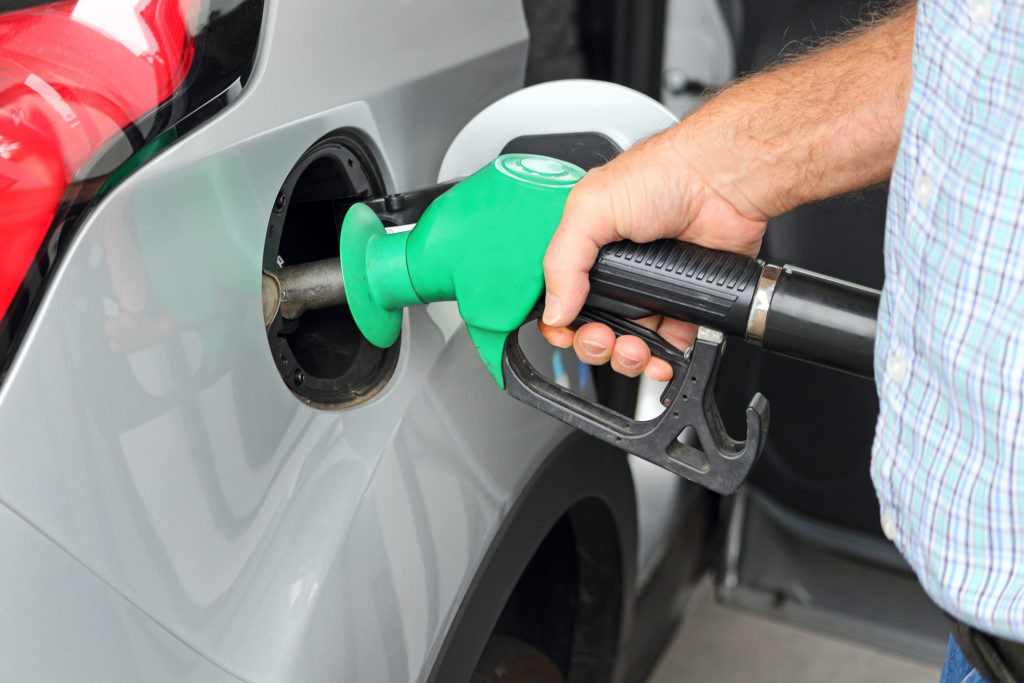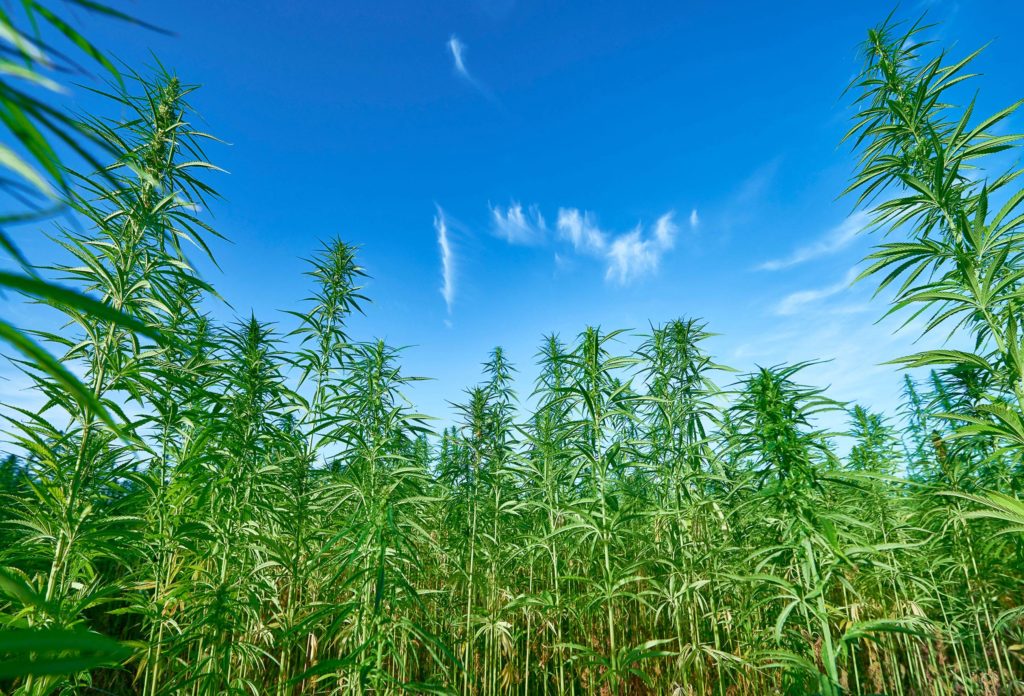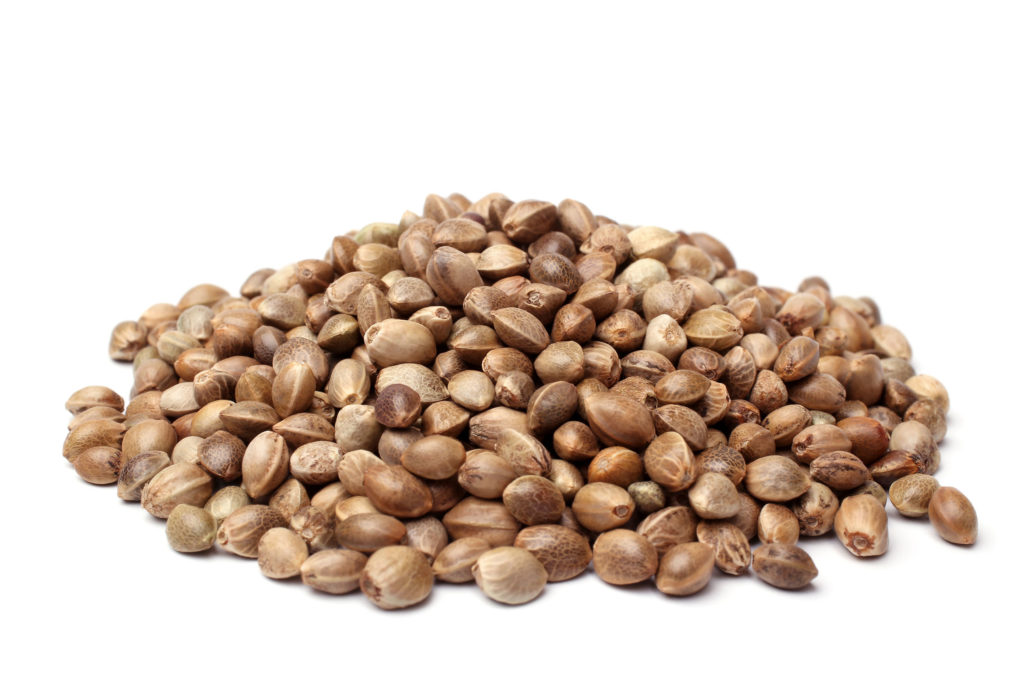The impacts of climate change on our fragile planet are both increasingly obvious and increasingly disastrous. Fossil fuels are unquestionably one of the biggest contributors; the race to find a sustainable substitute for these finite and ever-diminishing resources is on. Biofuel is one of the suggestions, but how viable is it? And is hemp the best biofuel?
It’s a common misconception among hemp and cannabis proponents that simply switching from fossil fuels to hemp biofuel would, in one fell swoop, would solve the world’s frankly terrifying fossil fuel conundrum. Far from being the planet-saving solution that they are all too often presented as, biofuels as a whole bring their own set of issues that create more problems than they solve.
Nothing exists in isolation. It’s vital to look at the domino effect that replacing fossil fuels with biofuels would have on the planet as a whole. However, when comparing hemp to other biofuel feedstocks, there are some advantages to be seen.

Biodiesel and ethanol can both be made from hemp
There are two types of biofuel: biodiesel and ethanol. Ethanol is made from grains (corn, barley, wheat, etc) or sugar cane, but can also be made from the inedible parts of most plants. It is frequently used as a biofuel, but usually blended with petrol.
Cars designed to run on petrol can only tolerate a 10% addition of ethanol to petrol; flexible fuel cars can use an up to 80% ethanol mix. In Brazil, where vast amounts of sugar cane are grown for biofuel, some cars can run on 100% ethanol.

Biodiesel is made by refining oils and fats from plants or animals, most commonly from vegetable oil, and requires methanol. Regular diesel is often blended with biodiesel at a ratio of 4:1 respectively, but blends can range from 2% – 100% biodiesel. A practical advantage of biodiesel is that any diesel car can run on it.
Hemp, if grown as a biofuel feedstock, would be able to produce both biofuels. Hempseed is comprised of 30-35% oil by weight, giving it a fuel yield of roughly 780 litres per hectare (207 gallons per hectare). This is considerably lower than palm oil and coconut, but over twice that of rapeseed, peanut, and sunflower, and four times that of soybean. The remainder of the plant can be made into ethanol using fermentation under low oxygen levels.
Natural consequences of biofuel production
The most common feedstocks used for biofuel are soybeans and corn (US), sugar cane and sugar beet (South America), palm oil (Southeast and East Asia), and rapeseed (Europe). All of these require significant amounts of fertile land in order to flourish.
Great swathes of rainforest have been destroyed to create space for oil palms and deforestation is occurring on an alarming and unprecedented scale in all of these areas. This has obliterated the habitat of numerous species, many of which (such as the orangutan) are already endangered.
These feedstocks are also grown on arable land formerly used to farm crops for human consumption, driving the prices of these crops up and out of the reach of the poor. In addition, what is known as ‘secondary deforestation’ is taking place as more land is needed to farm crops for food.
Biofuel targets set by various governments around the world might be doing more harm than good in terms of both climate change and food supply. It is the developing countries that are being hit the hardest by these problems rather than affluent ones.
What advantages does hemp have as a biofuel feedstock?
Hemp has the advantage of being able to grow in less fertile soil, and its ability to grow on what is referred to as ‘marginal land’ is highly praised by many. ‘Marginal land’ is fundamentally an economic term, denoting a piece of land that costs more to farm than it can profit from. This can refer to land with poor soil quality, pollution from previous industrial activities or lands with particularly difficult terrain challenges for farming, such as steep sloping mountainsides.
However, in real terms, it produces the most seed when grown on fertile land under optimum conditions. Should its use as a biofuel feedstock catch on, it is very likely that arable land would be devoted to hemp in the same way that it is to rival feedstocks now, with the same negative impact on the price of food.
The other problems with marginal land are that firstly, it often supports species and processes that are a valuable part of the ecosystem. Secondly, by its very nature, it tends to be in places that are impractical to farm, such as mountainsides.
The issue of how to harvest hemp in hard to reach places, and how to transport it to a biofuel processing facility, cannot be ignored. Since both activities generate CO2 by burning fossil fuels, this must be factored into its efficacy as a carbon-neutral crop. This applies to all biofuel feedstock crops, on all land, not just hemp on marginal land. The carbon cost of ploughing, sowing, harvesting, transportation and processing is higher than that of producing fossil fuels.
Although this means that switching to hemp fuel for all motor vehicles will neither solve the energy crisis nor halt climate change, there could be a smaller-scale, yet still helpful application. If farms are able to grow and process hemp on-site to make biofuels for farm vehicles and machinery, they may be able to create a self-sustaining and low-carbon-emitting ‘loop’. This can, on a small scale, help to end their dependency on fossil fuels. Hemp could be introduced as a rotation crop in existing food crop cultivation, lessening the impact on both food prices and fossil fuel use.
There is also the fact that hemp is currently very much a ‘niche market’ food crop, so there is not the same dependence on it as there is on corn, for example. However, this currently renders it cost-ineffective for large-scale biofuel production.
Minimal fertilizer and water is needed to grow hemp
Another area that requires scrutiny when looking at biofuels is the fertilizers needed to farm them. These fertilizers are basically nitrates from oil and gas – yes, fossil fuels – using the energy-intensive Haber-Bosch process to produce ammonia, which in turn is used as feedstock for all other nitrogen fertilizers.

Once introduced to land, they don’t just sit in the soil. Either they get washed into watercourses where they disturb the ecosystem, kill fish, and pollute drinking water supplies; or enter the atmosphere, becoming nitrous oxide. Nitrous oxide is a greenhouse gas worse than carbon dioxide. They also enter the atmosphere and become the mono-nitrogen oxides NO and NO₂, which contribute to ground level ozone (another health hazard).
Hemp requires soil fertility roughly equivalent to that of corn to grow well. However, around 70% of its nutrient requirements will be returned to the soil during and after the growth cycle. Plus, a small amount of nutrient gives a large yield response. This drastically reduces the amount of fertilisers it needs over the long term. This is a definite advantage over all other biofuel feedstocks.
The same can be said of its water requirements. One of the biggest problems with biofuels is that their production requires more water than fossil fuels, anywhere from twice to 48 times as much. Hemp requires about 30 – 40 cm (12-15 in) water per growing season or equivalent rainfall to produce a crop, whereas corn requires around 56 cm (22 inches).
The entire plant can be used
Perhaps one of the biggest advantages of hemp as a biofuel is the potential for using every part of the plant. Once oil is pressed from the seeds, the remaining hulls and seed matter can be compressed into ‘cakes’ for nutritious animal feed. Trim from harvesting and leaves that fall off during growth return to the soil, along with the roots, replenishing it for the next crop. The bast fibres and hurds are used for fibre, paper and building materials, to name but a few products.

Developments in biofuel research and its application to hemp
The process of pyrolysis is relatively new to the application of hemp biofuel. Pyrolysis involves subjective fibrous cellulose-containing plant matter (technically known as lignocellulosic biomass) to intense heat in order to obtain fuel-grade oils. The process is extremely economically feasible as basically waste biomass can be used in the process. The technique can be applied to hemp, and even to the enormous amount of biomass already produced by worldwide hemp and marijuana cultivation.
This development ties into the ways that the whole plant can be used, even simply the waste produced by the cannabis industry as a whole. For example, Washington alone produced 1.7 million pounds of cannabis plant waste in the first three years after legalization (2014).
Since this time, many European countries have legalized hemp cultivation and so has the USA, so the amount of waste is only expected to increase. California has been facing a cannabis waste problem for a long time. Pyrolysis offers a possible avenue through which to capitalize on cannabis and hemp waste and use it to make biofuel without confronting the already demanding issue of where to cultivate it.
There are still obstacles to discovering whether or not hemp is the best biofuel. Currently, the biggest obstacle to using hemp as biofuel is that so little of it is grown. Legislation has loosened over the last couple of years, especially in the USA, where hemp cultivation has been legalized.
However, most hemp cultivated in Europe, China and the USA is used in the production of food products, CBD products, cosmetics and research. Some of it is used in the manufacture of specialty spun products such as hemp paper and hemp rope.
Many advantages of hemp as a biofuel remain theoretical because so little of it has been used for biofuel on a commercial scale. It is to be fervently hoped that this does not remain the case for much longer.
- Disclaimer:Laws and regulations regarding cannabis cultivation differ from country to country. Sensi Seeds therefore strongly advises you to check your local laws and regulations. Do not act in conflict with the law.








1. Making Cellulosic hydrogen from the stalks of ALL strains of Cannabis is the MOST efficient way to turn sunlight into clean, usable energy on the scale required to supply all of humankind’s energy demands. 2.Hemp is also the ONLY crop that produces complete nutrition and sustainable energy from the same harvest. 3. Finally, Cannabis is the ONLY crop capable of replenishing Earth’s atmosphere with aerosol terpenes in the time we may have left to make a difference. These are only the first three reasons that the future existence of mankind depends on our species recognizing Cannabis as our functional interface with the Natural Order.
Google “Cannabis vs. Climate Change” on Amazon & Vimeo to find my book & film by the same title.
Best wishes to Ben & the lads from Oregon!
Good day sir.
I would love to be able to contact you. I live in Uganda and been exporting fruits and vegetables past 20 years among others. Now I am growing Cannabis and I am looking at the industrial side and want to run gasification and ethanol production parallelly. We are moving on very well and got full support. Know we seek knowledge to mix with our knowledge. I am to create extremely large industry here in Uganda. I am on Facebook and Twitter.
Yours.
Kristjan
Good morning Kristjan,
Thanks for contacting us here at Sensi Seeds.
Unfortunately, Exchanging contact information in the comments is not permitted under our terms and conditions. Do you maybe have a common interest on a social media application? Maybe the Sensi Seeds Instagram account is of interest to you both? In the meantime, thanks for your comments and I hope you continue to enjoy the blog.
With best wishes,
Mark
Thanks for keeping me updated! Articles like this are perfect reads to keep up with the industry!
Excellent post, truly exciting to read your ideas for this subject.
Hey great article. I appreciate when people do their research rather than just rant about things that they have no knowledge on. I do see where the issues come from with the production of hemp and the issues with the emissions. But on the other hand bio fuels are the first step in moving towards a clean energy. While hemp still does have the emission issues, it is no doubt a better alternative to fossil fuels. The issues could also be solved with a new perspective. One of the biggest things people do not include in articles such as this (and I am not saying that you forgot anything or that you didn’t do an amazing job with the article) is the fact that hemp is also a filter for all the emissions that have already been released and any from the hemp fuel. Every plant in the world works as a filter for the air and hemp is a very good filter. They actually planted hemp around Chernobyl in order to filter out radiation and it has shown to be able to handle almost anything that has been thrown at it. And as a third generation farmer I can tell you that the idea that hemps lack of need for fertilizer and low water inputs makes it a blessing for farmers who have been used to having to use high amounts of fertilizers and pesticides. Hemp is by no means the final frontier when it comes to a new fuel but it is a fuel that can be substituted directly into vehicles currently on the road and if combined with some electrolysis can lower the emissions even more and who knows where we could go from there. I like the idea of solar and electric powered vehicles but those all require a high amount of resources (check out the mines for lithium). There is also an issue when it comes to maintaining a vehicle over time. Right now, the average age of a vehicle is higher than it ever has been due to high cost of newer vehicles (which car manufacturers will tell you is due to the requirements of meeting EPA standards which is bullshit). With an electric car you have a much higher maintenance cost along with higher cost of components (I also work in a mechanics shop as a service writer). What I think would be the best option would be to start hemp production on a somewhat smaller scale and start doing research in how to maximize the production and efficiency of converting to biofuel and maybe see a number of hemp ran cars. From there it would take a change in the heart of society in order to continue in the effort to make the world cleaner, more loving, and more prosperous.
Thank You,
Billy
P.S. I would love to hear any feedback from you on the subject. I am always looking to better my knowledge and love to see things from the other perspective.
The problem isn’t cost the problem is big oil suppressing technology and helping keep the plat illegeal for the last 100 years is the problem.without interference from big oil the technology to process and farm hemp would be amazing but because big oil ,big pharma and dupont plastics couldn’t profit on nature and did evil things to keep it away.
What if a hemp plant were cloned to not produce thc, and instead was used as biofuel?
Create a sterile version and use hydro clay or cloning pods to create test subjects I know a few good people who legally grow in colorado but biofuel is future so i am just trouble shooting.
Hi there,
Thanks for your comment. I think that you are perhaps confusing industrial hemp with psychoactive cannabis? Industrial hemp, which is what is discussed in this article, has less than 0.3% THC, making it legal to grow in many places where cannabis strains with higher levels are illegal. You may also be interested in this article about using hemp as a biofuel.
With best wishes,
Scarlet
If you remove the fear around climate change that removes much of the negative around the use of hemp biofuel. Sure, you still have land use but that’s a given if we’re going to have a large human population and the fact that the whole plant can be used makes it a monster.
Hi Joseph,
Thanks for your comment. I must say that I find the idea of removing the fear around climate change quite alarming, given that it is the largest current existential threat not only to our species, but thousands of others too. We should be terrified into taking all the steps we can to mitigate it, rather than believing it’s going to be ok. I agree that hemp’s multiple uses do make it a monster of a resource though. If you haven’t already, you may enjoy reading ‘Hemp Bound’ by Doug Fine, which contains many insights into the currently expanding industrial hemp market.
With best wishes,
Scarlet
I would like to see hemp bio-fule all around. I know lots of areas where it could be grown. Could not a farmer plant an early crop of hemp, then a vegtable,followed by a late harvest of hemp?
Hi Tom,
Thank you for your comment, and your support for greener types of fuel! In theory, what you suggest could be possible, but you would need a really fast-growing and fast-maturing vegetable to make it work. Most vegetable crops are not ready to harvest until September, but I think that with something like rucola / rocket / arugula it might work. Anyone else have ideas for this?
With best wishes,
Scarlet
Well. It’s simply NOT true that solar, wind, and other forms of energy production does’nt spread emission of those natrual gasses.
Look it up yourself. The cleanset form of energy production is nuclear. The problem with nuclear is the waste and lack of knowledge in the technology behind it.
Hi Marcel,
I’m not sure if you’re referring to my article, or the comments from Captain Ozone stating “Solar, wind or water power (which are also zero-emissions)”. Although they basically are zero-emissions, I agree that there are CO2 emissions involved in the production of the technology that is used to harvest power from these natural sources. The payoff is that the sources are inexhaustible, do not produce emissions whilst working, and – unlike nuclear power – when something goes wrong (which it inevitably will), they don’t contaminate the land for miles around. Thus far, there is no perfect energy source, including hemp biofuel, so we have to keep looking.
With best wishes,
Scarlet
Wow, frankly I am stunned at how negative the rhetoric is in this article. The opening paragraph is one of doom and gloom!! It’s like Jeff Sessions wrote the article himself!!
Hi Sambo,
Unfortunately, a realistic approach to climate change doesn’t make for a happy upbeat article. I’d love it if hemp was a magic wand that we could wave at the impending disaster that is fossil fuel use, but the truth is, it’s not. As also stated in the opening paragraph, hemp has some advantages over other biofuel stock, but it is by no means perfect. We strive to publish well-researched, balanced articles that allow our readership to reach their own conclusions; I’m slightly surprised that you’ve concluded I write like Jeff Sessions, but I’ll take that on board!
With best wishes,
Scarlet
Hemp may not be the best for biofules, and there is always a trade off, but it is a lot better than other alternatives.
All types of ethanol, when burned, produce greenhouse gases – even ethanol made from hemp. The only fuel that is truly zero-emissions is hydrogen gas, which can be extracted from unlimited supplies of water through electrolysis. Solar, wind or water power (which are also zero-emissions) can generate the electrolysis needed to create hydrogen gas. It’s a viable system that can be employed near rivers, lakes and ocean shores that is entirely pollution-free.
-Captain Ozone
HEMP will save the World Economies when the Government’s let it. HEMP is GOD’S GIFT TO THE WORLD and the USA Power Elite after World War II set to classify HEMP as the Devil’s plant. HEMP was banned from doing GOD’S WORK creating local sustainable jobs and Economies.
All types of ethanol, when burned, produce greenhouse gases – even ethanol made from hemp. The only fuel that is truly zero-emissions is hydrogen gas, which can be extracted from unlimited supplies of water through electrolysis. Solar, wind or water power (which are also zero-emissions) can generate the electrolysis needed to create hydrogen gas. It’s a viable system that can be employed near rivers, lakes and ocean shores that is entirely pollution-free.
-Captain Ozone
Well ok you are right that it does release co2 when burned yes but unlike fossil fuel it was captured in a time relative to our current atmosphere..technically carbon neutral..If the entire plant is burned including the roots..but when parts of the plant are left un combusted such as roots, fibre,or curds ( roots left in the fields via tilless agriculture practices, fibre used for superior paper clothing and carbon fibre production to name so few and curds used in hemp Crete) You Will thenbe actually achieving carbon negative practices ( meaning it sequester s more carbon in a relative atmosphere than it releases).
Next is hydrogen is a great option especially through anaerobic digestion and hydrogenaise 2 step digestion.. but the problem is payload and storage capacity… liquid fuels ie ethanol from hemp and bio diesel take very little energy to produce and refine and they have very high calorific value compared to hydrogen from electrolysis to liquid hydrogen through energy intensive compression pathways… but we do need to keep developing our options. ;D
Sounds to me like you have been hitting the bong WAAAAYYYYY too hard. What a nutcase.
Obviously extracting CBD from a plant that induces headaches when smoked is not ideal.
I think they should grow Hemp by all Nation Forest. They would pollinate all illegal MJ being grown there.
Great article !
I didn t know about the cooking hemp oil research. Do you have link for more info ?
So what is the difference in amount of plant material needed to procure CBD from Cannabis Sativa L Hemp in comparison to medical cannabis strains?
I truly enjoyed your post. You clarified some things around the Hemp CBD vs Med Cannabis strains. I’m in the California market that plans to explode over the next few years. We have a lot of change ahead of us.
10% ethanol from corn, when we have a formidable greener cleaner burning fuel source in cannabis marihuana hemp! WOW, and these are our leaders!
Considering how many times I’ve been in a hospital and having to stay there for days at a time, or longer, I don’t really like to think about this though I had already known it was an issue..
Everyday there are more and more studies that prove that every part of the cannabis plant is extremely useful and things we not only want but NEED. And out health care is the biggest issue. How can you protect the problems that causes people trying to get better to get worse inside a hospital?
Excellent post, very informative. I ponder why the opposite specialists of this sector do not realize this. You should proceed your writing. I’m confident, you have a huge readers’ base already!|What’s Going down i’m new to this, I stumbled upon this I’ve discovered It absolutely useful and it has helped me out loads. I’m hoping to give a contribution & aid other customers like its aided me. Great job.